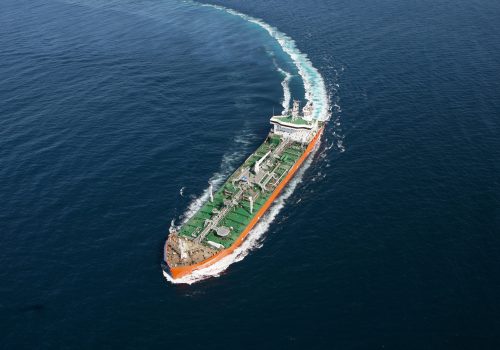Inside a central bank at war
New data show that the Israeli government has issued more than five billion dollars in bonds in the past several weeks in an effort to stabilize its economy and fund its war effort. A recent report suggests that Israel is paying a much higher yield on those bonds than it did only a few months ago—a signal that investors want a premium for the perceived risk that the crisis could worsen and their payments might be in jeopardy.
But what the markets are missing about Israel—and many other countries around the world—is how swift and assertive central banks have become in recent years. Look at what happened to the value of the Israeli shekel after investors began selling off the currency following Hamas’s brutal terrorist attacks on October 7. Only two days after the attacks, the Bank of Israel committed thirty billion dollars in reserves (and signaled its willingness to spend up to forty-five billion dollars). The move worked: The shekel has recovered all of its losses, posting the world’s highest gains against the dollar in November.
Starting with a series of economic crises in emerging markets in the 1990s, and especially after the 2008 Global Financial Crisis, central banks all over the world have expanded their crisis-management toolboxes. They have responded to the accelerating speed at which money can flow in—or out—of a country and have operated with new alacrity. One recent example in the United States is how the Federal Reserve sprang into action when Silicon Valley Bank collapsed in March 2023. In Russia, Central Bank Governor Elvira Nabiullina more than doubled interest rates and imposed capital controls only four days after the 2022 invasion of Ukraine, stabilizing the financial system at a time when many thought there would be a run on the banking system. The move gave the government more time, and when record oil and gas revenues came into its coffers in March of 2022, the ruble began to strengthen again.
Financial firefighters
Put yourself for a moment in the role of a central banker contending with the outbreak of war. People and companies are scrambling to move capital out of the country, weakening your country’s currency. A significant proportion of the country’s labor force is being called up in the war effort (at least 8 percent of Israel’s workforce has been mobilized), while others may leave to escape the war. This almost guarantees the economy that you, as the central banker, help oversee is about to go into recession (in Israel, investors now expect the economy to contract roughly 5 percent in the fourth quarter). And to make matters worse, the economic models that you normally rely on are suddenly meaningless in the face of wartime shocks.
So, you need money to prop up your economy at the same time that your government needs money to finance its war. But borrowing money—as Israel is now, with its bond-issuing spree—is increasingly expensive. Spooked international investors may avoid your country’s bonds: Ukraine’s bonds lost roughly three-quarters of their value following Russia’s invasion. Meanwhile, your efforts to stem capital flight, such as hiking interest rates, may raise domestic borrowing costs. Of course, you could print more money, but that would contribute to higher inflation. Wartime expenses will nearly always introduce more inflation down the road: Case in point, inflation was nearly 12 percent in Russia last year. Consider yourself fortunate if your country has built up foreign exchange reserves, which you can use to support your currency. That’s the situation Israel’s central bank finds itself in, having built enormous buffers since the 2014 Gaza War.
The Bank of Israel’s exceptionally large reserves mean that it has options if the crisis persists. Countries without such substantial reserves are more dependent on wartime bonds, domestic tax hikes, and foreign aid for capital. In Ukraine’s case, it has turned to US and European aid to help accumulate $41.7 billion in reserves.
Entering the geopolitical fray
The interplay between central banks and governments—and tensions between the two during wartime—is not new.
During World Wars I and II, the Federal Reserve held interest rates low to make the government’s borrowing cheaper, confident that the price control regime would keep inflation low during wartime (it did) and that inflation would naturally plummet at the end of the war (it did not).
But in the post-World War II era, which has seen a rise of central bank independence and inflation-targeting regimes, many central banks have tried to keep themselves at arm’s length from their fiscal counterparts and their political bosses. Even during times of war in the twentieth century, central banks sometimes refused to take measures when their governors believed such actions could undermine the long-term health of the economy. During the Vietnam War, for example, then-Federal Reserve Chair William McChesney Martin Jr. infuriated President Lyndon B. Johnson by hiking interest rates when lowering them would have made funding the war and Johnson’s Great Society programs cheaper.
In this new era of economic statecraft, however, the lines are increasingly blurred. Some central banks are becoming geopolitical actors in their own right; if a country’s reserve assets (like Russia’s three hundred billion dollars) are an acceptable target to block, then central banks will naturally start playing a more active role in war. In one of the most striking examples of weakening boundaries between central banks and the governments they serve, a top military officer has been appointed as a deputy governor of Russia’s central bank.
As central banks take on this increasingly geopolitical role, their decisions can indicate what kind of future their leaders are preparing for. Perhaps the most telling balance sheet to look at is China’s. While the official foreign exchange reserves of the People’s Bank of China have not grown significantly, state banks and other closely associated enterprises have accumulated substantial “shadow reserves.” This does not mean that China is gearing up for war, but growth in Beijing’s cash pile (and the ways it is accounted for) is one of the most important financial metrics to watch in the years ahead.
Central banks’ decisions are consequential in ordinary times. The stakes are even higher in wartime, as central banks, if effective, support the ability of their countries to carry on military campaigns and maintain the stability of their societies under wartime stress.
In recent years, governments have asked more and more of central banks: to provide economic stimulus when their fiscal counterparts cannot agree (as in quantitative easing), to manage the consequences of vast economic and supply chain decisions beyond their control (as in the post-COVID pandemic inflationary environment), and even, as the conversations at the United Nations Climate Conference last week demonstrated, to help combat climate change.
Now, central bankers are being asked to move with the speed, creativity, and geopolitical awareness usually only asked of diplomats and the military. It’s a brave new world for central bankers—and how they handle it may dictate the relationship between banks and their governments for years to come.
Josh Lipsky is the senior director of the Atlantic Council’s GeoEconomics Center and a former adviser at the International Monetary Fund.
Phillip Meng contributed research and data visualization to this piece.
Further reading
Fri, Dec 1, 2023
Financialization has increased economic fragility
Econographics By Hung Tran
Since the 1980s, financial activities and assets have played an increasingly dominant role in the global economy. At the same time, underlying economic activity as measured by global GDP has been growing more slowly. The result has been an ever-larger gap between the volume and value of financial activity relative to the real economy. And […]
Thu, Nov 30, 2023
Milei is backing away from his radical dollarization idea. What options does Argentina have?
New Atlanticist By Martin Mühleisen
The incoming president’s campaign pledge to move Argentina to the US dollar seems less and less likely in the near term.
Thu, Nov 9, 2023
Rebooting the Russian oil price cap
New Atlanticist By
Atlantic Council experts weigh in on how to improve the price cap on Russian oil imposed after Russia’s invasion of Ukraine.
Image: The Bank of Israel building is seen in Jerusalem on June 16, 2020. Photo via REUTERS/Ronen Zvulun/File Photo.


